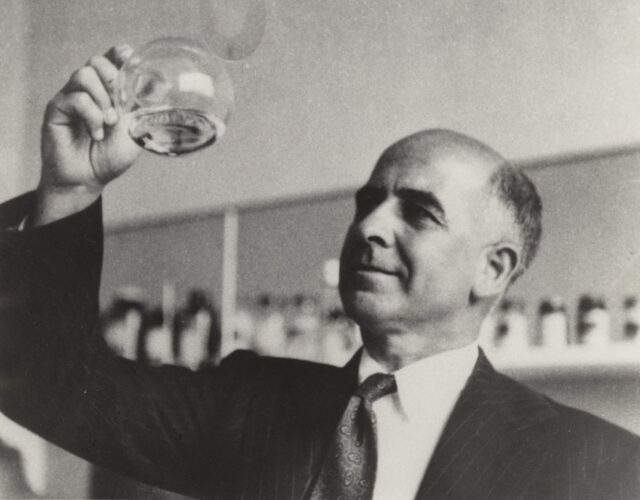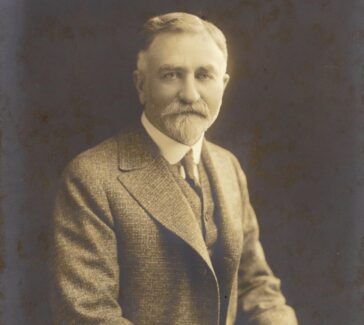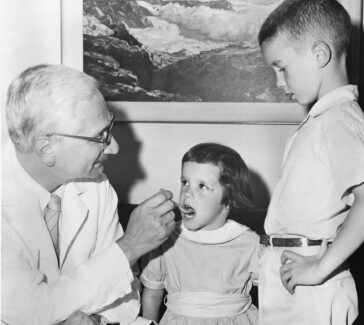Russell Earl Marker
With a talent for difficult organic syntheses, Marker produced synthetic hormones from plants, including giant yams, and cofounded Syntex.

Russell Marker helped develop the octane rating system for gasoline, but his real gift was for synthesizing organic compounds, most notably hormones. He was able to produce progesterone from Mexican yams.
In the 1930s chemists recognized the structural similarity of a large group of natural substances—the steroids. These include the sex hormones and the cortical hormones of the adrenal glands. The medicinal potential of these compounds was clear, but extracting sufficient quantities of them from animal tissue and fluids was prohibitively expensive. As with other scarce or difficult-to-isolate natural products, chemists were called upon to mimic nature by creating these steroids in the lab, and later by modifying them to make them safer and more effective as drugs.
Chemists found starting materials in certain plant substances that were also steroids. Russell Earl Marker (1902–1995) was among the many scientists, including Percy Lavon Julian, Carl Djerassi, and George Rosenkranz, who participated actively in the synthesis and large-scale production of steroids from plant compounds.
A Talent for Organic Chemistry
Marker was born in 1902 in a log cabin on a farm near Hagerstown, Maryland, where his father was a sharecropper until he could afford to purchase his own land. Although his father wanted Russell to stay on the farm, his mother encouraged him to pursue a college education. In this she prevailed. Since the high school that Marker attended offered only a commercial program, he had not taken the preparatory subjects necessary for admission to the University of Maryland, but he did well in summer-school mathematics and English courses and was accepted to the regular degree program in the fall of 1919.
His introduction to the subject of chemistry, unlike that of most other students, came in college, where he had to catch up with his classmates’ familiarity with simple equipment and the chemical symbols. In the organic chemistry laboratory he demonstrated outstanding skill in carrying out difficult organic syntheses, a talent that would serve him well throughout his career. On completing his bachelor’s degree he continued at the university as a graduate student, writing both a master’s thesis and a doctoral dissertation. When he learned that he lacked required courses in physical chemistry, he left without completing the degree. His interest was in organic chemistry, and he thought he knew all the physical chemistry he needed.
Work on Gasoline
Setting out in industry, Marker worked for about half a year as an analytical chemist at the Naval Powder Factory in Indian Head, Maryland. In 1926 he obtained a more research-oriented position at the research laboratory of the Ethyl Gasoline Corporation in Yonkers, New York. This company had recently been founded to produce tetraethyl lead, the gasoline additive that increased the fuel efficiency of gasoline engines and made usable the petroleum fractions previously burned or vented into the atmosphere. (Fifty years later the Environmental Protection Agency instituted the reduction of tetraethyl lead in gasoline as hazardous to the health of gasoline attendants and others who came into close contact with its fumes.)
At Ethyl, Marker helped develop the standard gasoline against which “octane” is rated. Meanwhile word spread of his reputation as a wizard at synthesizing organic chemicals that other scientists found difficult to obtain, and he was asked to synthesize a particular compound for a scientist working at the Rockefeller Institute in New York City. After Marker successfully completed this task, Simon Flexner, the institute’s president, invited him to take a position at this prestigious biomedical research facility in 1928.
Synthesizing Hormones
Although Marker’s major responsibility at the institute was to synthesize compounds for other scientists, he was also encouraged to carry out his own research projects. In the early 1930s he became interested in the emerging field of hormones. When he declared his interest in synthesizing hormones from plant materials, he came into conflict with the powers at the institute.
One of the institute scientists, working on the plant steroid present in the sarsaparilla root, had supposedly “proved” that the molecule simply could not be converted into a chemical intermediate to a hormone. In a confrontation with Flexner, who praised Marker’s performance in general but would not agree to a research project that looked like it was going nowhere, Marker threatened to leave the institute if he could not have his way.
And leave he did, in 1934, for a much lower-paying position in the chemistry department at Pennsylvania State University. Here he was welcomed by a department chairman who had known and admired Marker’s work on hydrocarbons at Ethyl. With the aid of reagents and intermediates supplied by Parke, Davis and Company, Marker set to work repeating the experiments done on steroids by the great German and Swiss scientists like Adolf Butenandt and Lavoslav (Leopold) Ružička. Marker’s first big success was in isolating pregnanediol from bull’s urine. From this substance he synthesized progesterone.
Giant Yams
Meanwhile Marker was able to show that the structure of one of the sapogenins, plant sterols modified by treatment with acid, was not that reported by leading chemists in Germany and the United States—and that the compound was not inert. He then proceeded to transform the sapogenin from sarsaparilla root, sarsasapogenin, into a molecule identical in structure to that of progesterone. Marker turned next to a substance called diosgenin, obtained from a member of the Dioscorea plant group, a genus containing yams, and transformed it into progesterone.
This success sent Marker off on a wide-ranging search for species of Dioscorea with sufficiently large roots to make harvesting and processing the material economical. In 1942 he searched for and found in the wilds of Mexico the cabeza de negro, a yam with roots that can weigh up to a hundred pounds each. At the time Mexico seemed about to join the Axis powers in World War II, which made his adventure appear risky indeed to officials at the U.S. embassy in Mexico City.
Back in the United States with samples of dried root, Marker tried unsuccessfully to convince the president of Parke, Davis that the company should rely on diosgenin as the starting material for their manufacture of hormones. Drawing half his meager savings from the bank, Marker returned to Mexico to pursue the development of diosgenin on his own. He made arrangements for the harvesting, drying, and extracting of a syrup from the roots and its export to the United States to a small laboratory, which turned it into what amounted to three extremely valuable kilograms of progesterone.
Founding Syntex
Marker tried to interest financial backers in his venture—without success, until he discovered Laboratorios Hormona in Mexico City. This company, begun in 1933 to extract hormones from animal sources, was founded by Emeric Somlo, a Hungarian lawyer-entrepreneur who had first come to Mexico in the 1920s. In March 1944, Marker, Somlo, and Frederico Lehmann, Hormona’s chief chemist, formed a new company called Syntex. Somlo and Marker did not get along well, and in May 1945 Marker left Syntex, taking his processes with him. He founded Botanica-Mex, which also made hormones from Dioscorea and did so with some success. But in 1949 Marker left Botanica-Mex, which survived for decades as a subsidiary of successive international companies.
Leaving Chemistry Behind
In 1949, at the age of 47, Marker left chemistry altogether to set up a business making reproductions of 18th-century silver objects. He had become a legend in his own time. He first reappeared in the chemical community in 1969 when the Mexican Chemical Society presented him with an award. Some at the ceremony presumed that this was a posthumous award and were shocked to see Marker walk in. In fact he lived another two-and-a-half decades, occasionally attending symposia honoring him and his chemical colleagues.
Featured image: Russell Marker. Penn State University Archives, Eberly Family Special Collections Library.



